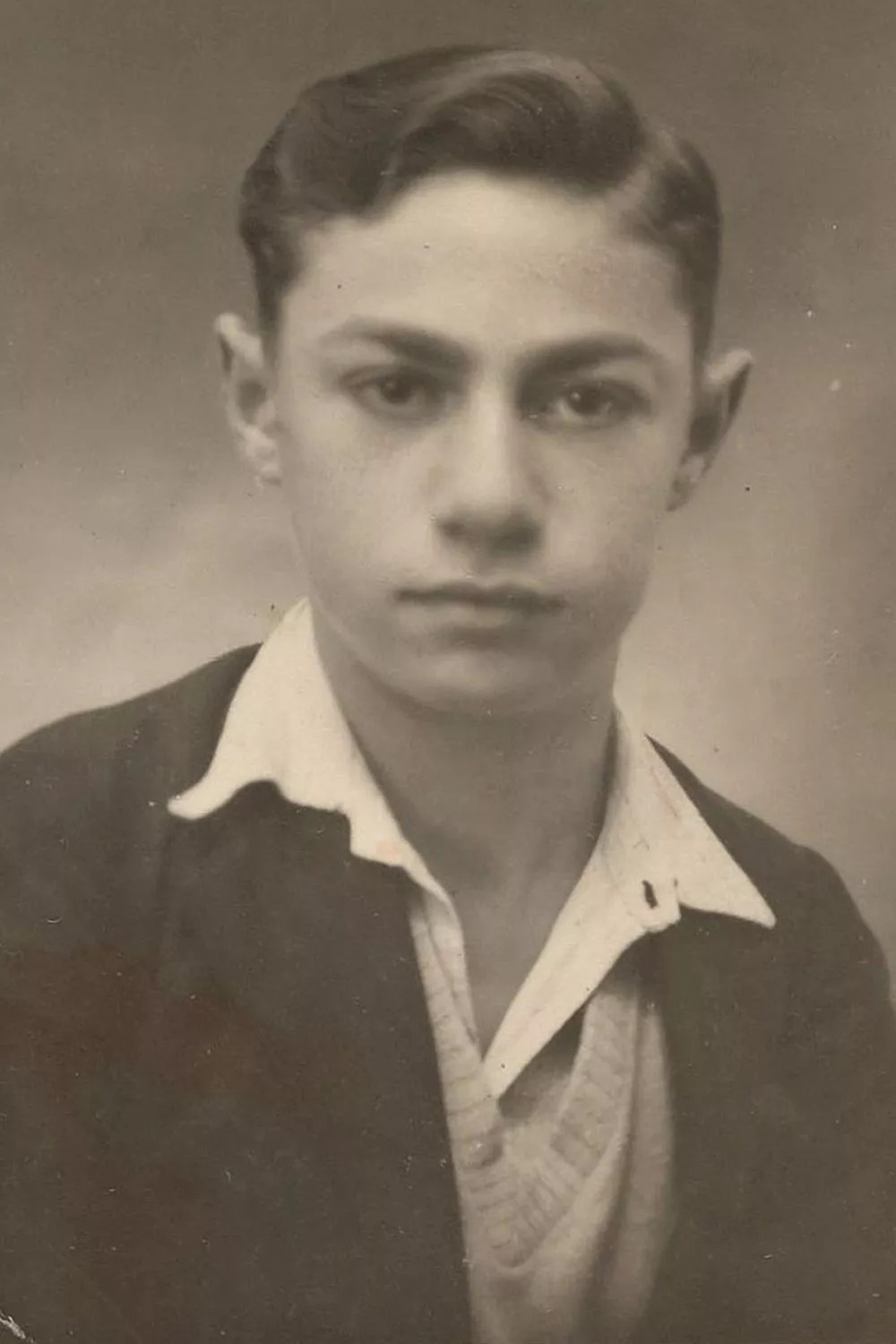There he watched in horror as a Nazi gleefully slaughtered an infant nursing at their mother’s breast.
On a podium stood a Nazi officer splitting people into two groups. He either pointed his finger to the left — for those chosen to live, including nurses, doctors, tailors, “who could be of use” — or to the right, “those who were going to be shot,” Lazowski explains. “I saw all the elderly and all the young children going in that direction.”
Philip and Ruth Lazowski.courtesy Lazowski family

With mere minutes separating Lazowski from life or death, he spotted a woman holding a nursing certificate and standing with her two little girls. He asked if she would take him as her son.
“She looked at me with such kindness and said, ‘If they let me leave with two children, maybe they let me leave with three. Hold on to my dress.’ And we went to the side of the living,” he says, his voice quaking with emotion. “I saw the lady only for 15 to 18 minutes, but I never forgot her.”
Philip Lazowski in 1945.courtesy Lazowski family

Lazowski would safely return to his family, but in August 1942, the Nazis returned to massacre the remaining Jews in the ghetto. As his mother pushed him from a window to help him escape death, she told her son, “Tell the world what happened.”
“This is the result of not educating people enough about theHolocaust,” says Lazowski. “When people forget what happened, they are vulnerable to [the idea] that it never happened.”
RELATED VIDEO: Cousins Reunite 75 Years After Being Separated During The Holocaust
“We have a choice to make this world better — or hate and destroy each other,” he adds.
Years later he would get the surprise of a lifetime. After settling in Brooklyn, Lazowski reluctantly attended the wedding of a college classmate in 1953.
“I didn’t have the proper clothes, I didn’t know how to dance,” he says.
Ruth Lazowski (right) with her family.courtesy Lazowski family

But he went and ending up talking to a young woman named Gloria.
“When she heard I was from Bielica [his family’s town before banishment to the ghetto], she said, ‘Oh my God! My best girlfriend Ruth’s mother saved a boy from Bielica,'” he recalls. “And when she finished telling me the story, I said, ‘I am the boy!'”
He found out that the woman who saved him, Mirian Rabinowitz, lived in Hartford, Connecticut, and gave her a call. “I’m so happy to hear that you are alive!” she told him over the phone.
For more on Philip Lazowski’s incredible story of survival, pick up the latest issue of PEOPLE, on newsstands Friday, or subscribehere.
Lazowski wrote to her the next day: “I didn’t and couldn’t forget you…I was looking all over to find you, but as the Talmud says, ‘The day will come,’ and the day did come.”
He soon visited Miriam and saw her daughters. The two little girls who were in line with them during the Holocaust were now grown women, ages 18 and 19. He quickly became fond of one of them, Ruth. The feeling was mutual.
“I liked his looks, he was very friendly,” Ruth tells PEOPLE, “and I fell in love.”

Says Lazowski: “I felt in my heart that she is the one for me, because she went through so much that I did.”
In the years since they married in 1955, Lazowski became the longtime rabbi of a Hartford synagogue; partnered with a Catholic priest on a mental health initiative at Hartford Hospital; and became the chaplain to the Connecticut state Senate — where he continues to serve today.
Meanwhile, he and Ruth had three sons and became grandparents seven times over.
Their son Alan — a 61-year-old board member of theAnti-Defamation LeagueandNAACP— says Lazowski was a “model son-in-law” who often drove Ruth’s parents, Miriam and Morris, around town and took care of them until the end of their lives.
Lazowski shrugs off any praise: “I always consider her a mother to me,” he says.
Remembering the mother he lost to an evil he wants the world never to forget, lest it rise again, Lazowski adds: “God was good to me that I was saved, that I’m still alive. I tried my very best and I think I fulfilled what my mother asked of me.”
source: people.com